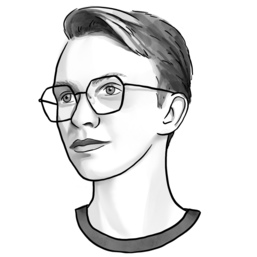
Pepijn Stoop | Where are the women in AI?
Let me start off this column by stating two obvious things: diversity is important, and within artificial intelligence (AI) and computer science it could be a lot better. Although I had already noticed during the first two years of my bachelor's that the female-to-male ratio was always a paltry 25/75, it only really became clear to me during my first KI-related side job.
Even during my first college orientation four years ago, it was obvious to me: the computer science/KI corner is dominated by white, straight, cisgender men. Although I knew that this course was more popular with men, nothing could have prepared me for when I first walked into a computer science class at Leiden University.
There I stood in the doorway of the lecture hall with my painted nails, looking out over a sea of uniform Jack & Jones sweaters. There was exactly one woman in the room. When I sat down and grabbed my pink notebook, there were giggly comments about it. Ouch. Now that I work as a Machine Learning Engineer, I see the exact same pattern: not a single female developer works for us, and I am the only queer person in the workplace.
It is no secret that women still have a subordinate position in Dutch science faculty: Folia reporter Thirza Lont wrote about this as recently as February of this year. One could argue that AI and computer science at the UvA follow a similar pattern. But within that branch of natural sciences, the balance tips even further in the male direction: the male-female ratio within university computer science is on average 90/10. What exactly the ratio is at the UvA for bachelors’ of KI and computer science cannot be found: neither on the bachelors’ programs website, nor at external sources, such as Studiekeuze123.
In addition, within the bachelor's KI, the number of female lecturers has decreased to one in recent years. Computer systems professor Ana Varbanescu was replaced by a man this year, as was B. Afshari (named Bea among students) of Problem Solving and Search. Both professors were well-liked among students. Just the other day I was talking with fellow students about how enthusiastically Ana could always explain things and that she won a place in people’s hearts in no time, especially among my female classmates. Although the faculty has long struggled with a high factuly turnover due to temporary contracts, I think this is a huge loss of role models and diversity.
This is in spite of the fact that women programmers have always been there: they decoded secret messages from the Nazis for the UK Intelligence Agency in World War II, programmed the code for the Concorde in the 1960s with pen and paper from home, and co-wrote the code that put the first man on the moon. Yet in 2022, we hide behind the fact that women are simply not interested in robotics, for example. The UvA should more actively promote female role models, at least in the undergraduate KI teaching team. More women within KI and computer science, especially in times of extreme labor shortages, are more than welcome.
Pepijn Stoop is an artificial intelligence student at the UvA.

